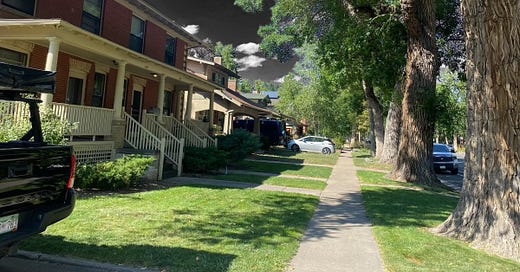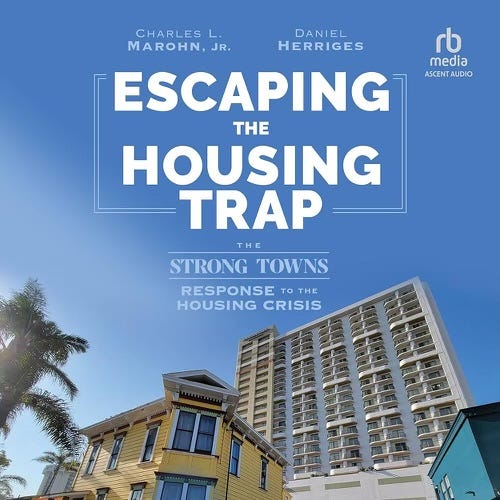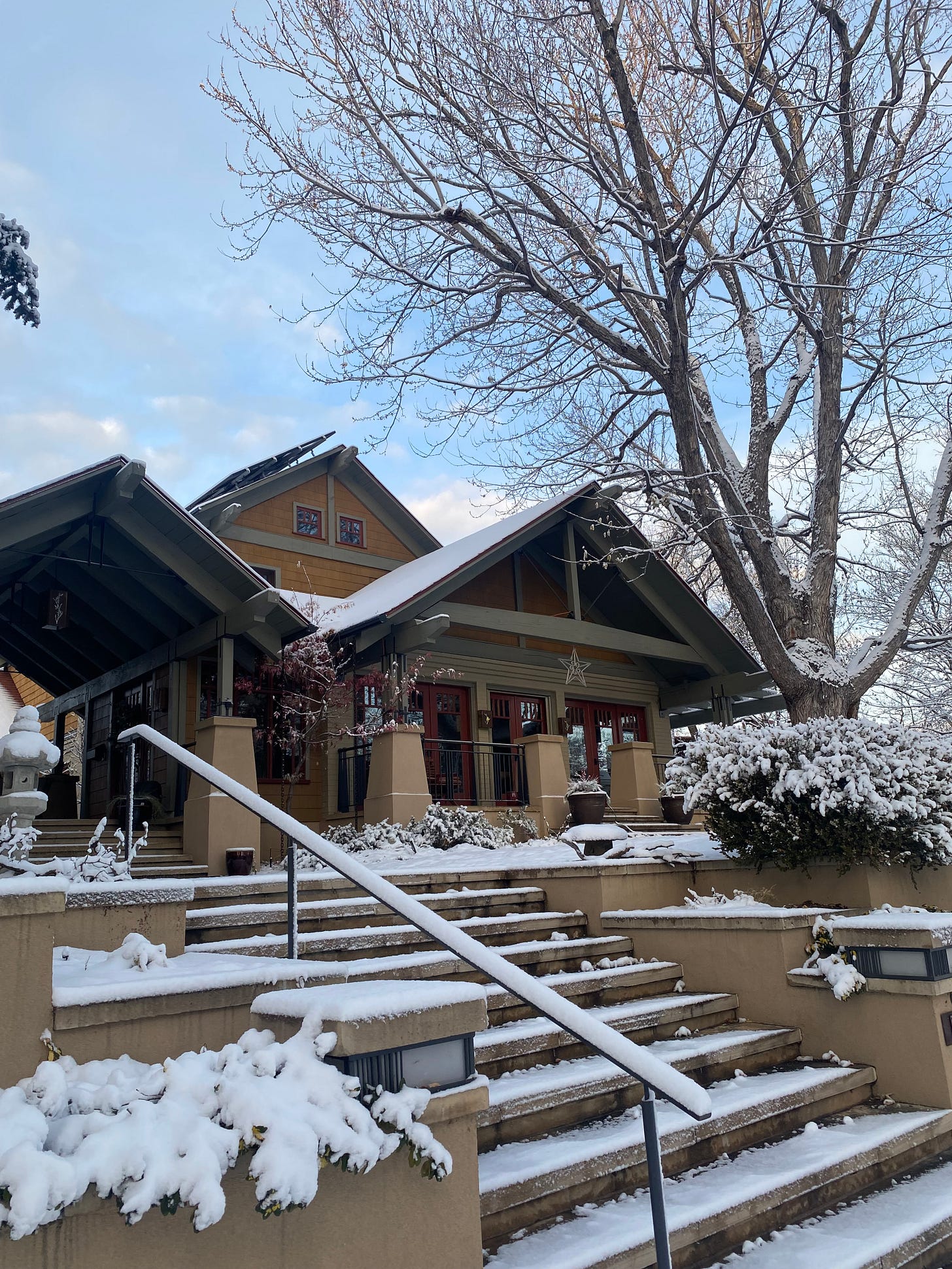During my years as an urban journalist, I traveled across America, observing firsthand the ground-level reality of the housing market that economists and policymakers often discuss in abstract terms.
I’ve spoken to countless everyday people about their struggle to find affordable housing and manage the rising cost of living in cities big and small. What I’ve heard over and over is that the dream of having a secure, stable home—a place that’s more than just a roof over one’s head—is slipping away for so many.
But this isn’t just a story about others; it’s also my story. As a freelance writer and independent journalist, I’ve had to develop my own strategies for navigating the wilds of today’s ever-increasing cost of living.
I’ve experimented with unconventional, temporary housing and transportation solutions in cities like Las Vegas, San Diego, and Fort Collins, where I’ve alternated between Airbnb stays and Lyft rides to find a balance between shelter and mobility.
Through this journey, I’ve come face-to-face with the reality that housing insecurity isn’t just a distant policy issue—it’s a daily, lived experience. And it's a reality that forces one to make difficult choices, rethink conventional wisdom, and adapt in ways that challenge comfort and stability.
In the middle of a heated debate on America’s housing crisis, renowned urbanists Charles (Chuck) Marohn and Daniel Herriges come forth with a bold proclamation: It’s time to escape the housing trap.
In their new book, “Escaping the Housing Trap: The Strong Towns' Response to the Housing Crisis,” Marohn and Herriges confront the fundamental tension between housing as an investment and housing as shelter.
This profoundly important dialogue, often missing from mainstream discussions, digs deep into the historical roots and modern-day implications of this dichotomy, offering readers a nuanced understanding of the forces shaping our neighborhoods today.
Today’s housing crisis has many faces—skyrocketing home prices, gentrification, zoning battles, and the never-ending NIMBY (Not In My Backyard) wars. Yet Marohn and Herriges argue that the crux of the problem boils down to one truth: housing is seen both as a commodity that must appreciate in value and as a basic human necessity.
The result? A market rigged against ordinary Americans, where housing prices spiral ever upwards, displacing families, straining community bonds, and deepening economic inequality.
Marohn, the founder and president of Strong Towns, explains the intent behind his work:
“I wrote ‘Strong Towns’ to start a real conversation about the state of America's cities and towns. Local governments are going broke, and cities are facing a long, slow, grinding decline. It may not look like it in places that are growing like crazy, but what looks like wealth on the surface is an illusion.”
His latest collaboration with Herriges takes this idea a step further, peeling back the layers of a dysfunctional system where housing policy is caught between serving Wall Street and Main Street.
A System Stacked Against Us?
In “Escaping the Housing Trap,” Marohn and Herriges trace the evolution of the American housing market, identifying key moments that transformed housing from a fundamental human right into a speculative asset.
This transformation began in the late 19th century and took off in the 1930s, when the federal government intervened during the Great Depression to stabilize a collapsing housing market.
Mortgages, once short-term and risky, became longer-term and more accessible. The establishment of a secondary housing market through institutions like Fannie Mae and Freddie Mac allowed local banks to sell off loans, freeing up cash for more lending and embedding a system reliant on continuously rising home values.
Marohn critiques this shift, stating:
“After World War II, these tools, initially designed to prevent deflation, have instead been used to artificially inflate housing prices. This has led to a series of housing bubbles. Our response to economic downturns remains consistent: reduce interest rates, inject capital into housing, and increase infrastructure spending. In attempting to expand the economy, we have made it more and more reliant on housing mortgages—making it increasingly impossible for housing prices to lower.”
The book reveals that the problem runs deeper than mere policy; it’s about an entire culture of investment. Housing must always go up in value to maintain the façade of economic growth. Yet this creates a relentless upward pressure on prices that renders shelter unattainable for many. In turn, efforts to “solve” the crisis often fall back on the same flawed logic, perpetuating the cycle rather than breaking it.
Zoning, NIMBYism, and the Myth of Stability
One of the most contentious topics tackled by Marohn and Herriges is the role of zoning and NIMBYism in exacerbating the crisis. Zoning laws, originally introduced in the early 20th century to ensure health and safety standards, have evolved into tools that rigidly dictate what can be built and where.
When coupled with the “Suburban Experiment”—a model of development that constructs entire neighborhoods all at once to a completed state—these laws become an albatross, choking off adaptability and resilience.
Marohn highlights the consequences:
“Zoning today severely restricts what kind of housing can be built and where it can be built. This is the antithesis of the traditional development pattern, as it throttles our ability to adapt to change.”
NIMBYism further complicates the picture. Homeowners have been sold the notion that their neighborhood should never change, leading to resistance against even modest infill development. This has paralyzed local governments and exacerbated housing shortages, particularly in high-demand areas.
Marohn and Herriges argue for a radical but necessary shift in perspective: no neighborhood should be exempt from change, but neither should any experience radical transformation. The path forward, they say, lies in “small bets”—incremental changes that respect local context and build slowly toward larger, more sustainable solutions.
The Power of Small Bets: South Bend, Indiana; Muskegon, Michigan and Durham, North Carolina as Models of Change
Unlike sweeping top-down policies that often misfire or have unintended consequences, Marohn and Herriges advocate for bottom-up approaches tailored to each community's unique needs. They point to cities like South Bend, Indiana, Muskegon, Michigan, and Durham, North Carolina, as examples of where this localized strategy has started to bear fruit.
In South Bend, small-scale developers took matters into their own hands, purchasing and revitalizing properties in long-neglected neighborhoods. They managed to bypass traditional financing barriers through self-funding and a focus on small, manageable projects. Over time, city officials noticed the organic success and began supporting these efforts with simpler zoning codes and pre-approved building plans.
Muskegon employed a similar strategy but leveraged tax increment financing to back small developers working on vacant lots. The result? Over 100 new houses in just five years, many of which are affordable, entry-level homes.
Meanwhile, Durham made headlines by eliminating single-family-only zoning and opening up more land for diverse housing options. These examples demonstrate the impact of incremental, community-driven change in addressing the housing crisis.
Striking a Balance: Preserving Shelter, Welcoming Investment
How can cities navigate the delicate balance between welcoming necessary investments and ensuring housing remains an affordable, accessible form of shelter? Marohn and Herriges lay out several guiding principles: low barriers to housing entry, integration with local economic ecosystems, and a focus on infrastructure investments that genuinely serve those who are struggling.
These principles challenge the current paradigm that often sees neighborhoods transformed overnight by high-end condos and luxury developments, forcing out long-term residents and creating distrust. Instead, Marohn and Herriges advocate for a nuanced approach—understanding the next logical step for each neighborhood rather than a one-size-fits-all solution.
For instance, a neighborhood dominated by single-family homes might benefit from the introduction of accessory dwelling units (ADUs), duplexes, or even small apartment buildings. On transit corridors, mixed-use developments could be the next step. The key is not to impose change but to encourage incremental growth that fits the local context and meets genuine demand.
A Call to Reframe the Conversation: From Investment to Shelter
One of the most compelling arguments in “Escaping the Housing Trap” is the need to reframe the national conversation around housing—from investment to shelter. Marohn passionately argues, “Reframing housing as shelter instead of investment emphasizes the need for adaptability. While investment only has one need—to increase in price—people’s need for shelter changes throughout their lives.”
The consequences of failing to make this shift are stark. Rising housing costs do not just lead to financial strain but ripple out into social instability, family stress, and psychological trauma.
The book calls on local leaders to prioritize community engagement and education, helping residents understand that adaptability, not stasis, is the key to resilience.
Breaking Free: Steps Toward Escaping the Housing Trap
The book is not just a diagnosis but a prescription. Marohn and Herriges lay out a practical roadmap for escaping the housing trap, centered around three key actions:
💥 Eliminate Restrictive Zoning Regulations: Local governments must recognize that current zoning laws often serve to protect existing property values at the expense of adaptability and affordability. Identifying the next incremental step suitable for each neighborhood is crucial, allowing for more diverse housing types and gradual densification where appropriate.
💥 Empower Local, Incremental Developers: Cultivating a new class of small-scale developers is essential. This means creating educational programs, offering incentives, and streamlining the permitting process for “missing middle” housing options that fill the gap between single-family homes and large apartment complexes.
💥 Innovative Financing Solutions: Local governments need to rethink traditional financing models that favor large developers. Instead, they should explore creative financing methods, such as community land trusts, shared equity models, and localized lending institutions that prioritize the community's needs over investor returns.
A Bold Vision for Housing’s Future
Marohn and Herriges are not naïve. They know their approach will meet resistance from entrenched interests and those comfortable with the status quo. Yet their vision is compelling in its simplicity: by reconnecting housing policy with the basic human need for shelter, and by grounding economic decisions in local realities rather than speculative fantasies, we can begin to untangle the complex web that traps so many in housing precarity.
Escaping the Housing Trap is more than a book; it’s a call to action. It demands that we rethink our relationship with our neighborhoods, question our assumptions about growth and investment, and commit to building communities that are both financially stable and socially just.
The conversation Marohn and Herriges started here is one that all of us need to join—and quickly—before the trap snaps shut even tighter.
Since January of 2020, Great Books, Great Minds has provided subscribers community, connection and conversation around books for free—no paywall.
But our future relies on you. At $6.00/month or $60.00 per year, please help me sustain our vision of impacting one million readers worldwide by 2030.








Insightful review of a book more of us should read. Neither our daughter nor our grandsons have been able to buy a home and as you and the authors point out, they are far from alone.
Thank you for this post.